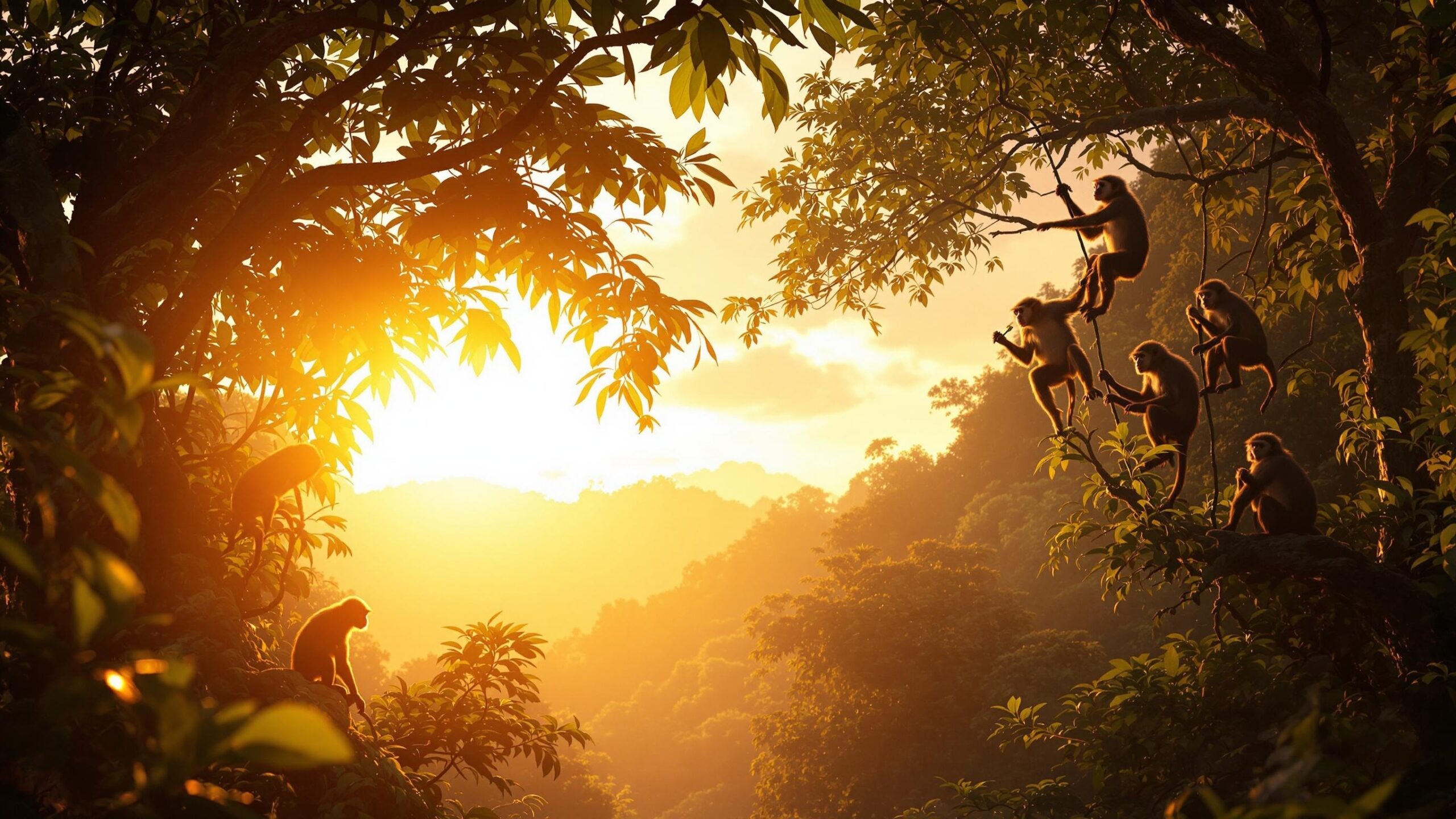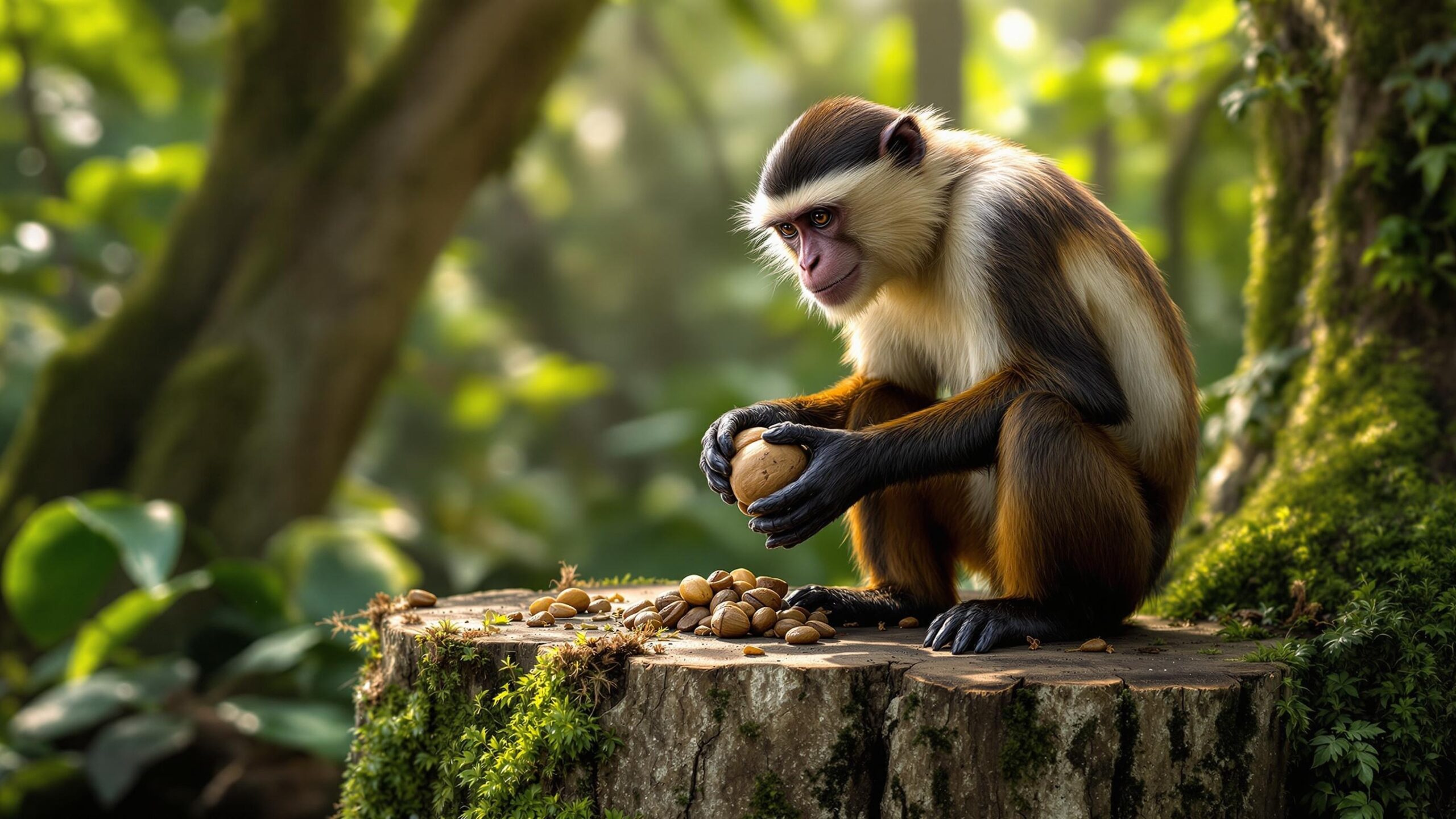Capuchin Monkey (Cebus and Sapajus): The Clever Clowns of the Canopy
From the thick rainforests of Central and South America to the sunlit edges of tropical woodlands, a flash of fur and a burst of chatter signal the presence of one of the most intelligent and agile primates in the New World. The Capuchin monkey, belonging to the genera Cebus (gracile capuchins) and Sapajus (robust capuchins), is a small but mighty figure in the primate world—famed for its cunning, charisma, and deeply social nature.
Often referred to as the “organ grinder’s monkey” due to its popularity in historical street performances, the Capuchin has a legacy far richer than its showbiz past. It is a creature of boundless curiosity and creativity, capable of using tools, solving problems, and navigating the complexities of forest life with a flair that continues to captivate scientists and nature lovers alike. This comprehensive guide explores the biology, behavior, ecology, and cultural relevance of the Capuchin monkey, revealing why this little primate is considered one of the smartest non-human animals in the Americas.
Taxonomy and Species: Two Tribes of Intelligence
Capuchins are divided into two distinct groups: the gracile capuchins (Cebus) and the robust capuchins (Sapajus). Though once grouped under a single genus, advances in molecular studies revealed enough genetic divergence to warrant a taxonomic split. Gracile capuchins, like the white-faced capuchin (Cebus capucinus) and the white-fronted capuchin (Cebus albifrons), tend to have slimmer bodies and less muscular builds. They inhabit regions in Central America and the northern part of South America.
Robust capuchins, such as the black-striped capuchin (Sapajus libidinosus) and the tufted capuchin (Sapajus apella), are stockier, with stronger limbs and a more powerful bite—an adaptation to their harder-shelled diet. They are primarily found throughout Brazil and the Amazon Basin. Despite these differences, both groups share many behavioral traits and exhibit remarkable intelligence that sets them apart from most other primates in their range.
Physical Features: Small Body, Big Personality
Capuchins are relatively small monkeys, weighing between 3 to 9 pounds and measuring 12 to 22 inches in body length, with a tail nearly as long as their body. This prehensile tail is not only used for balance but can also support their body weight as they move through the treetops—a vital adaptation for life in the canopy.
Their fur comes in shades of cream, brown, black, and gold, often with dramatic facial markings that give them a somewhat monk-like appearance—hence the name “Capuchin,” which refers to the hooded robes of Capuchin friars. Tufted capuchins also sport a pair of dark tufts or “horns” of fur above their eyebrows, lending them a mischievous look befitting their personality. Capuchins have dexterous hands, opposable thumbs, and forward-facing eyes, giving them excellent depth perception and fine motor control—perfect for manipulating objects, foraging, and even using tools.
Habitat and Range: Forest Flexibility
Capuchin monkeys have one of the widest distributions of any New World primate. They can be found from Honduras in Central America all the way down to northern Argentina, thriving in a diverse range of environments. These include tropical rainforests, dry deciduous forests, mangroves, palm swamps, and secondary growth forests.
One of the key factors in their success is ecological flexibility. Capuchins are able to adapt to varying levels of forest cover and human disturbance. In fact, some populations are even known to live near agricultural fields and rural human settlements, occasionally raiding crops or scavenging in villages. Although they prefer dense canopies where they can swing, leap, and forage in safety, they are also capable of navigating fragmented landscapes and degraded forests. This adaptability makes them more resilient than many other primates to habitat loss—though it doesn’t make them invincible.
Diet and Feeding Behavior: The Curious Omnivore
Capuchins are omnivorous generalists, which means their diet includes an enormous variety of foods. Fruit makes up a significant portion of their intake, but they also consume seeds, nuts, flowers, leaves, insects, bird eggs, small reptiles, and even amphibians. Their strong jaws allow them to crack open tough nuts and palm fruits that other monkeys can’t access. Some robust capuchins have even been observed using stone tools to break open hard-shelled nuts—making them one of the few non-human primates to regularly employ tools in the wild.
Foraging is a social affair. Groups travel through the forest in coordinated fashion, with individuals calling to one another and sharing information about food sources. Capuchins also use their hands to manipulate food in surprisingly sophisticated ways, peeling fruits, stripping bark, or removing thorns before consumption. This diet not only fuels their active brains but also makes them critical seed dispersers, aiding forest regeneration and biodiversity.

Social Structure: Bands of Mischief and Bonds
Capuchin monkeys live in complex social groups, typically consisting of 10 to 30 individuals. These groups are usually organized around a dominant male, several adult females, juveniles, and infants. In some populations, multiple males may share group leadership, but a clear hierarchy still exists. The social bonds within these groups are strong and enduring. Females often remain in their birth group for life, forming matrilines and close-knit subgroups. Males typically leave the group at adolescence to join or form new troops.
Grooming plays an essential role in maintaining group cohesion and reducing tension. While capuchins don’t groom as often as some Old World monkeys, they do engage in mutual cleaning, playing, and cuddling—especially among related females and young monkeys. Conflict is usually resolved through displays, vocalizations, or minor aggression, though serious fights are rare. Capuchins also practice cooperative behaviors, such as group defense against predators and joint care of infants.
Communication: Language in Expression and Sound
Capuchins have a wide array of vocalizations, facial expressions, and body postures that form a rich language of social interaction. Their vocal repertoire includes alarm calls, food calls, cooing to infants, screeches, and threat barks. Facial expressions—such as grimaces, pouts, or lip-smacking—can indicate everything from submission to contentment to irritation. Tail positioning and body posture also play a role in conveying mood and intention.
Vocal alarms are especially important for group survival. Capuchins are vulnerable to a range of predators, including raptors, snakes, and large cats. When danger is near, a sharp alarm call can send the entire group scurrying for cover in the canopy. Some studies suggest that capuchins are capable of referential communication, meaning specific sounds are associated with specific types of threats—evidence of higher cognitive function.
Intelligence and Tool Use: Nature’s Problem Solvers
What truly sets capuchins apart is their extraordinary intelligence. Among New World monkeys, they rank highest in cognitive abilities, rivaling chimpanzees and even some human toddlers in certain problem-solving tasks. Capuchins have been observed using tools in both the wild and captivity. This includes using stones to crack nuts, sticks to extract insects, and leaves as makeshift spoons. In experimental settings, they have shown the ability to understand cause and effect, use mirrors, recognize themselves in reflections, and learn from observation.
They also exhibit cultural behavior, meaning different groups have different “traditions” or behaviors passed down socially rather than genetically. These may include unique grooming habits, food processing techniques, or play routines not seen in other groups. Their intelligence also makes them skilled escape artists and tricksters, both in the wild and in captivity. This resourcefulness is one of the reasons capuchins have featured in movies, trained-animal shows, and even assisted-living scenarios—though ethical concerns about using primates in such roles are now widespread.
Reproduction and Life Cycle: Raising the Next Generation
Capuchin monkeys reproduce year-round, though births often peak in times of food abundance. After a gestation period of around 5.5 months, a single infant is born and clings to its mother’s back for the first few months of life. Mothers are the primary caregivers, but in some groups, older siblings and even unrelated females may help in carrying and grooming infants—a behavior known as alloparenting. This communal rearing provides social experience for juveniles and increases survival chances for infants.
Weaning occurs around 12 to 18 months, but young capuchins may continue to nurse occasionally well past their first birthday. Sexual maturity is typically reached between 4 to 7 years of age, with females maturing earlier than males. Lifespans vary depending on habitat and threats, but wild capuchins often live into their twenties, while those in managed care can live past 40 years. Their slow maturation and long lifespan are hallmarks of an intelligent, socially complex species.
Threats and Conservation: Clever but Not Invincible
While capuchins are widespread and some species are considered of Least Concern, others face mounting challenges. Habitat destruction due to logging, agriculture, and urban development has fragmented populations and reduced access to food and shelter. Capuchins are also targeted by the illegal pet trade, where their cuteness as infants makes them highly sought after. Unfortunately, capturing infants often involves killing the mother, leading to serious population disruptions. Once in captivity, many capuchins suffer from inadequate care, stress, and behavioral issues.
Additionally, capuchins are sometimes hunted as bushmeat or killed as crop raiders when they forage in farmland near forest edges. Conservation efforts are underway across their range. These include the creation of protected areas, wildlife corridors, educational campaigns, and community-based programs that help reduce human-monkey conflict. In some regions, ecotourism offers a sustainable alternative income source and raises awareness of the importance of primate conservation.

Role in the Ecosystem: The Forest’s Little Gardeners
Capuchins play a vital ecological role as seed dispersers and ecosystem engineers. Their varied diet means they spread seeds over wide areas, aiding in forest regeneration and plant diversity. By foraging for insects, stripping bark, and disturbing leaf litter, they also help aerate the soil and control insect populations. Their interactions with fruiting trees influence which plants thrive and where, subtly shaping the forest’s botanical makeup.
Their presence also supports a broader food web. Capuchins are prey for several top predators, and their behavior influences the dynamics of other species in their environment. In short, protecting capuchins means protecting the entire health and function of the forest ecosystem they call home.
Capuchins and People: Shared Curiosity
Humans have had a long and complicated relationship with capuchins. In indigenous folklore, capuchins are often portrayed as mischievous, intelligent tricksters—spirits of the forest with a playful but cunning edge.
In modern times, their expressive faces, clever behavior, and adaptability have made them stars of pop culture, appearing in everything from Hollywood films to viral videos. While entertaining, such portrayals can unfortunately contribute to the demand for capuchins as exotic pets—something conservationists strongly discourage. On a more hopeful note, capuchins are also ambassadors for rainforest conservation. Seeing these lively creatures in the wild can inspire a lifelong appreciation for biodiversity, habitat protection, and the delicate balance of natural systems.
The Brainy Acrobat of the Americas
The Capuchin monkey is a paradox wrapped in fur: tiny but powerful, playful yet strategic, endearingly social yet fiercely independent. It is a survivor, an innovator, and above all, a thinker—navigating the treetops of some of the world’s richest ecosystems with the skill of an acrobat and the mind of an engineer. To protect the capuchin is to safeguard a creature that embodies the best of the natural world’s intelligence, adaptability, and creativity. And in doing so, we also preserve the forests that breathe life into our planet, one branch, one fruit, one monkey at a time.

